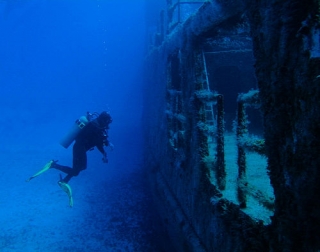
From an organic perspective, this sea can be considered a fully defined region with numerous endemic species. The difference between this tropical Atlantic region and other seas can be explained by its geological past. Central America has significant tectonic activity—just recall the tragic earthquakes that have struck this region in recent years. This seismic activity caused constant subsidence and uplifts in the Isthmus of Panama in ancient times, allowing the marine fauna of the Caribbean to intermingle with that of the eastern Pacific. Today, the Caribbean is in an isolation period lasting over a million years.
Though this sea captivates us unconditionally, quantitatively, its richness of life is modest compared to other tropical seas due to its size. For example, this region has catalogued 27 genera and 48 coral species, while the Pacific (much larger) boasts 92 and 600, respectively. But to appreciate nature’s quality and beauty, subtler criteria exist—applied by true connoisseurs of marine life—ranking this marvellous sea among the planet’s most stunning zones.

The Bay Islands
Heading south from the reefs of Yucatán (Mexico) and Belize, we find the Bay Islands off Honduras’ coast, comprising Roatán, Guanaja, and Utila. The largest, Roatán, offers not only exceptional diving amid surrounding coral reefs but also breathtaking landscapes. This long, narrow island faces the relatively constant easterly winds, so its eastern waters are often choppy.

The best reefs for diving lie northwest, where corals thrive abundantly. Exploring these depths, the stark contrast with the Yucatán reefs—just sixty miles away—is striking. A prime example is the abundance of towering pillar coral colonies (Dendrogyra cylindrus), reaching up to five metres tall, dwarfing divers. This coral species is rare in Mexican waters. Creole fish, small blue-purple fish moving in large schools along reef channels and drop-offs, and cleaning stations where shrimp and small fish tend to larger species—numbering in the hundreds—are other defining features.
Top Dive Sites
Several shallow wrecks are accessible to all divers. Two of them, the Águila and the Prince Albert, are most visited for their locations—the latter reachable directly from the beach.

Another unmissable dive is offered by Anthony’s Key Resort. Dolphins appear on a white sandy seabed, playing with divers for about twenty minutes and allowing endless photography. On their keeper’s cue, they surface and vanish as swiftly as they arrived.
Southwest of the island, near the lighthouse, lie several excellent dive spots. These deep sites (around 40 metres) host typical habitat species: massive tubular or barrel sponges, gorgonians, and dense black coral formations covering the underwater cliff face. Lobsters, squirrelfish, and large green morays hide in crevices. Beyond the reef wall, mid-water sightings include sizable barracuda, jacks, and—with luck—the occasional shark.
Coco Reef, situated offshore in the south (and thus less frequented), teems with life. Pelagic species mingle with reef dwellers due to the area’s abundant food. Grunts and snappers hover confidently mid-water, while parrotfish, butterflyfish, angelfish, and triggerfish weave through the corals.

Useful Information
Make time for a land excursion to the Mayan ruins of Copán Valley, where a magnificent city of 25,000 thrived around 1000 B.C. Though only 20% has been excavated after a century, its preservation and intricate stelae carvings are extraordinary. Another astonishing relic is the "Hieroglyphic Stairway"—63 meticulously carved steps forming the longest known Mayan text.
As throughout the Caribbean, the best conditions run from February to July, though other months (except hurricane-prone September/October) are also suitable. Water temperatures (24–29°C) are ideal for diving. No visa is required—just a valid passport. Though Spanish is Honduras’ official language, islanders speak English due to British colonial influence. No vaccinations are mandatory, but malaria prophylaxis may be wise for inland travel.
From Spain, fly to Miami or San Pedro Sula, then connect to Roatán. US dollars and credit cards are widely accepted (despite the official Lempira currency). Note: electricity runs at 110V with flat-prong plugs. The island boasts superb hotels with well-equipped dive clubs, hyperbaric chambers, and cruise boats touring all three islands.











